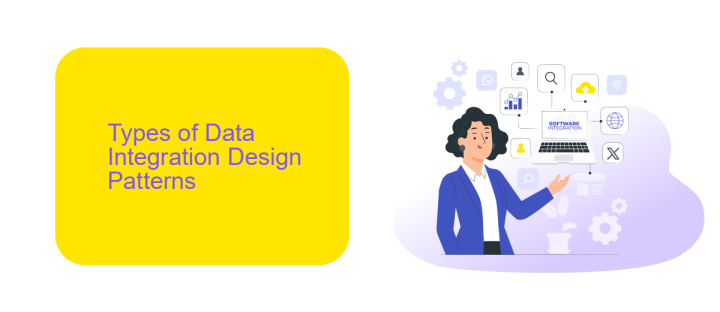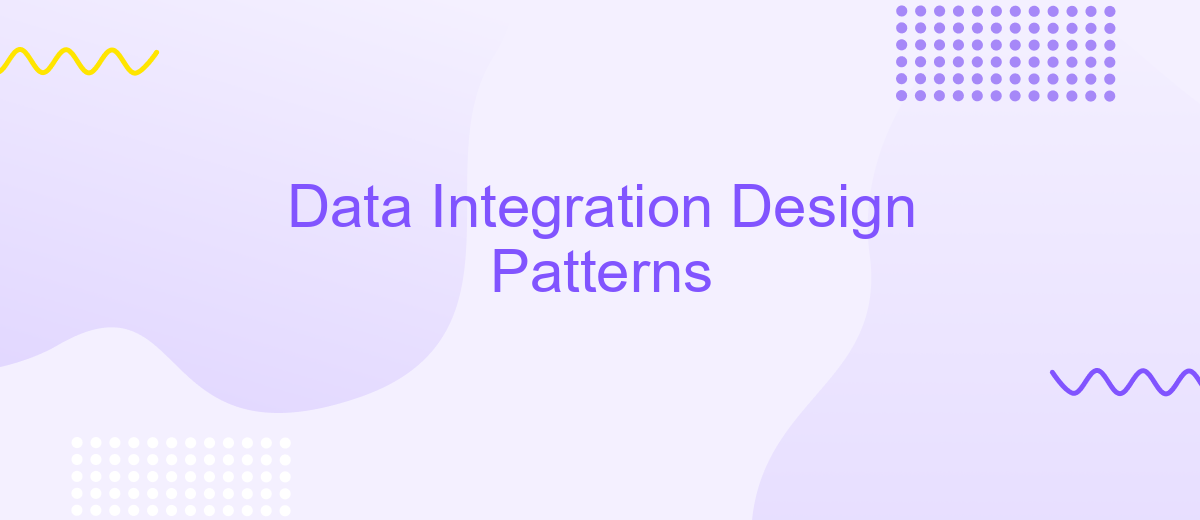Data Integration Design Patterns
Data integration design patterns are essential for seamlessly combining data from various sources into a cohesive and unified view. These patterns provide structured approaches to tackle common challenges in data integration, ensuring consistency, accuracy, and efficiency. By understanding and applying these patterns, organizations can enhance their data management strategies, enabling better decision-making and operational effectiveness. This article explores key data integration design patterns and their practical applications.
Introduction
Data integration is a crucial aspect of modern business operations, enabling seamless communication between disparate systems and enhancing overall efficiency. As organizations increasingly rely on diverse software solutions, the need for robust data integration design patterns becomes paramount. These patterns provide standardized methods to ensure data consistency, accuracy, and accessibility across various platforms.
- Data Consolidation: Aggregating data from multiple sources into a single repository.
- Data Propagation: Distributing data across different systems in real-time or near real-time.
- Data Federation: Creating a virtual database that provides a unified view of data from multiple sources.
- Data Transformation: Converting data from one format or structure to another to ensure compatibility.
Implementing these design patterns can be simplified using tools like ApiX-Drive, which offers a user-friendly interface for setting up integrations between various applications. By leveraging such services, businesses can automate data flows, reduce manual intervention, and maintain data integrity. As a result, they can focus more on strategic initiatives rather than dealing with data silos and inconsistencies.
Types of Data Integration Design Patterns

Data integration design patterns are essential for synchronizing and consolidating data from various sources into a unified system. One common pattern is the ETL (Extract, Transform, Load) process, which involves extracting data from disparate sources, transforming it into a consistent format, and loading it into a target database or data warehouse. This pattern is highly effective for batch processing and large-scale data migrations.
Another popular design pattern is the use of APIs for real-time data integration. This approach allows for immediate data exchange between systems, ensuring that information is always up-to-date. Services like ApiX-Drive facilitate this by offering a user-friendly platform to set up and manage API integrations without requiring extensive coding knowledge. Additionally, the Data Virtualization pattern enables access to data across multiple systems without physical data movement, providing a unified view for analysis and reporting. Each of these patterns addresses specific needs and challenges, making it crucial to choose the right one based on the project's requirements.
Choosing the Right Design Pattern

Choosing the right data integration design pattern is crucial for ensuring efficient and seamless data flow within an organization. The selection process involves evaluating various factors such as data volume, complexity, latency requirements, and the specific use case. Understanding these factors will help in determining the most suitable pattern for your needs.
- Batch Processing: Ideal for large volumes of data that do not require real-time processing.
- Real-Time Processing: Suitable for scenarios where immediate data updates are critical.
- Data Virtualization: Useful for integrating data from multiple sources without physical consolidation.
- API-Driven Integration: Best for connecting modern applications through APIs, leveraging tools like ApiX-Drive for streamlined setup.
- Event-Driven Architecture: Excellent for systems that rely on event notifications and reactive processing.
Each design pattern has its strengths and weaknesses, and the choice depends on your specific requirements. For example, ApiX-Drive can simplify API-driven integration by providing a user-friendly interface for connecting various services. Always consider the long-term maintenance and scalability of the chosen pattern to ensure it meets future business needs.
Best Practices for Designing Data Integration

When designing data integration solutions, it is crucial to focus on creating efficient, scalable, and maintainable systems. Start by clearly defining the integration requirements and understanding the data sources involved. This initial step helps in selecting the most suitable integration patterns and tools.
Next, ensure data quality and consistency across all integrated systems. Implementing robust data validation and transformation processes can prevent issues related to data discrepancies. Additionally, consider the security aspects of data integration to protect sensitive information and comply with regulatory standards.
- Use standardized data formats and protocols.
- Implement error handling and logging mechanisms.
- Automate integration processes where possible.
- Regularly monitor and optimize performance.
- Utilize tools like ApiX-Drive for seamless API integration.
Finally, maintain comprehensive documentation of the integration processes and configurations. This practice not only aids in troubleshooting but also ensures smooth transitions during system upgrades or team changes. By following these best practices, you can create robust data integration solutions that drive business efficiency and innovation.
Conclusion
In conclusion, data integration design patterns are essential for creating robust, scalable, and efficient data ecosystems. By understanding and implementing these patterns, organizations can overcome common integration challenges, streamline their data workflows, and ensure data consistency and accuracy. Properly designed data integration solutions enable seamless communication between disparate systems, facilitating better decision-making and operational efficiency.
Moreover, leveraging tools like ApiX-Drive can significantly simplify the integration process. ApiX-Drive offers a user-friendly interface and a wide range of pre-built connectors, making it easier to integrate various applications and services without extensive coding knowledge. This not only accelerates the deployment of integration solutions but also reduces the risk of errors and maintenance efforts. As data continues to grow in volume and complexity, adopting effective data integration design patterns and utilizing advanced integration tools will be crucial for maintaining a competitive edge.
FAQ
What is Data Integration?
Why are Data Integration Design Patterns important?
What are some common Data Integration Design Patterns?
How can I automate data integration processes?
What factors should I consider when choosing a Data Integration tool?
Apix-Drive is a simple and efficient system connector that will help you automate routine tasks and optimize business processes. You can save time and money, direct these resources to more important purposes. Test ApiX-Drive and make sure that this tool will relieve your employees and after 5 minutes of settings your business will start working faster.

